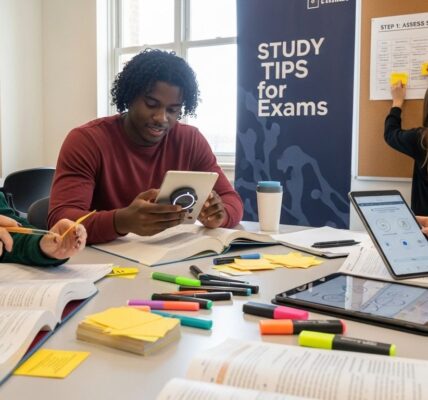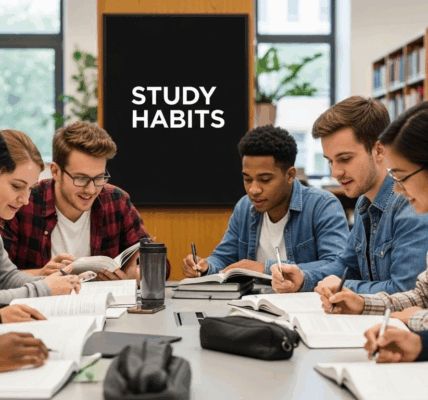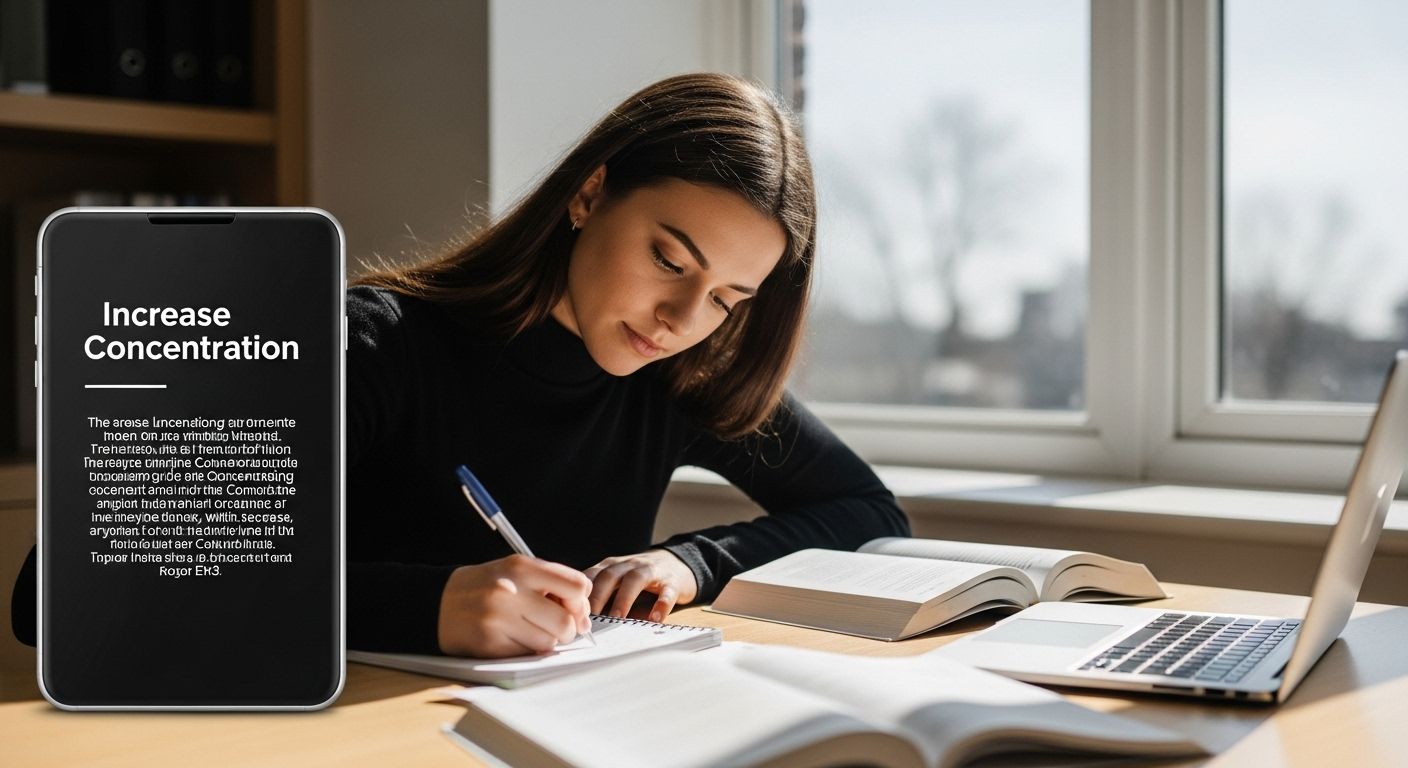
Studying in the age of constant notifications seems almost impossible and it is not just your imagination. Research shows that digital interruptions can cut student productivity by up to 40 percent. You might think strong willpower is all it takes to stay focused but the real secret lies in simple routines and surprising habits that turn scattered attention into powerful concentration.
Table of Contents
- Understanding Common Distractions In Studying
- Proven Techniques To Improve Focus Quickly
- Healthy Habits That Boost Concentration Long-Term
- Practical Tools And Study Environment Tips
Quick Summary
| Takeaway | Explanation |
|---|---|
| Minimize digital distractions | Limit use of smartphones and notifications while studying to improve focus and memory retention. |
| Adopt structured study methods | Use techniques like the Pomodoro Technique to break study sessions into manageable intervals, enhancing concentration. |
| Incorporate mindfulness practices | Engage in 10-15 minutes of mindfulness or meditation daily to strengthen attention and mental clarity. |
| Maintain healthy nutrition | Eat balanced meals with complex carbohydrates and omega-3s to fuel cognitive function and sustain concentration. |
| Create an optimal study environment | Design a clutter-free, quiet study space to maximize focus and minimize external interruptions. |
Understanding Common Distractions in Studying
Studying effectively requires more than just good intentions. Students face numerous challenges that can derail their concentration and learning progress. Learn strategies to overcome study obstacles, especially when confronting the most common distractions that interrupt academic focus.
Digital Interruptions: The Silent Productivity Killer
In today’s interconnected world, digital technologies have become a significant barrier to effective studying. Research from the National Institutes of Health reveals that mobile devices and digital notifications create substantial disruptions to student concentration. These technological interruptions are more than just momentary breaks. They fragment attention, significantly impacting memory retention and overall learning outcomes.
Smartphones, social media notifications, and constant email alerts create a continuous stream of potential distractions. Each ping or vibration triggers a dopamine response that pulls your attention away from study materials. This constant context switching can reduce cognitive performance and extend the time required to complete academic tasks.
Environmental and Personal Distractions
Beyond digital interruptions, students encounter multiple environmental and personal distractions that compromise study effectiveness. Noisy environments, uncomfortable study spaces, physical discomfort, and internal emotional states can all contribute to reduced concentration.
Physical surroundings play a crucial role in maintaining focus. Cluttered study areas, excessive background noise, improper lighting, and uncomfortable seating can drain mental energy. Personal factors such as hunger, fatigue, stress, and emotional turbulence further complicate the ability to maintain sustained attention.
To help you quickly identify the most common distractions and their impact, here is a summary table that organizes digital, environmental, and personal distractions discussed above:
| Distraction Type | Examples | How It Impacts Study Focus |
|---|---|---|
| Digital Interruptions | Smartphones, social media, email notifications | Fragmented attention, reduced productivity |
| Environmental Distractions | Noisy spaces, clutter, poor lighting, bad seating | Drains mental energy, discomfort |
| Personal Distractions | Hunger, fatigue, stress, emotional turbulence | Lowers sustained attention, mental clarity |
Understanding these distractions is the first step toward developing targeted strategies to mitigate their impact. Recognizing the specific challenges that interrupt your study flow allows you to create personalized interventions that enhance concentration and learning efficiency.
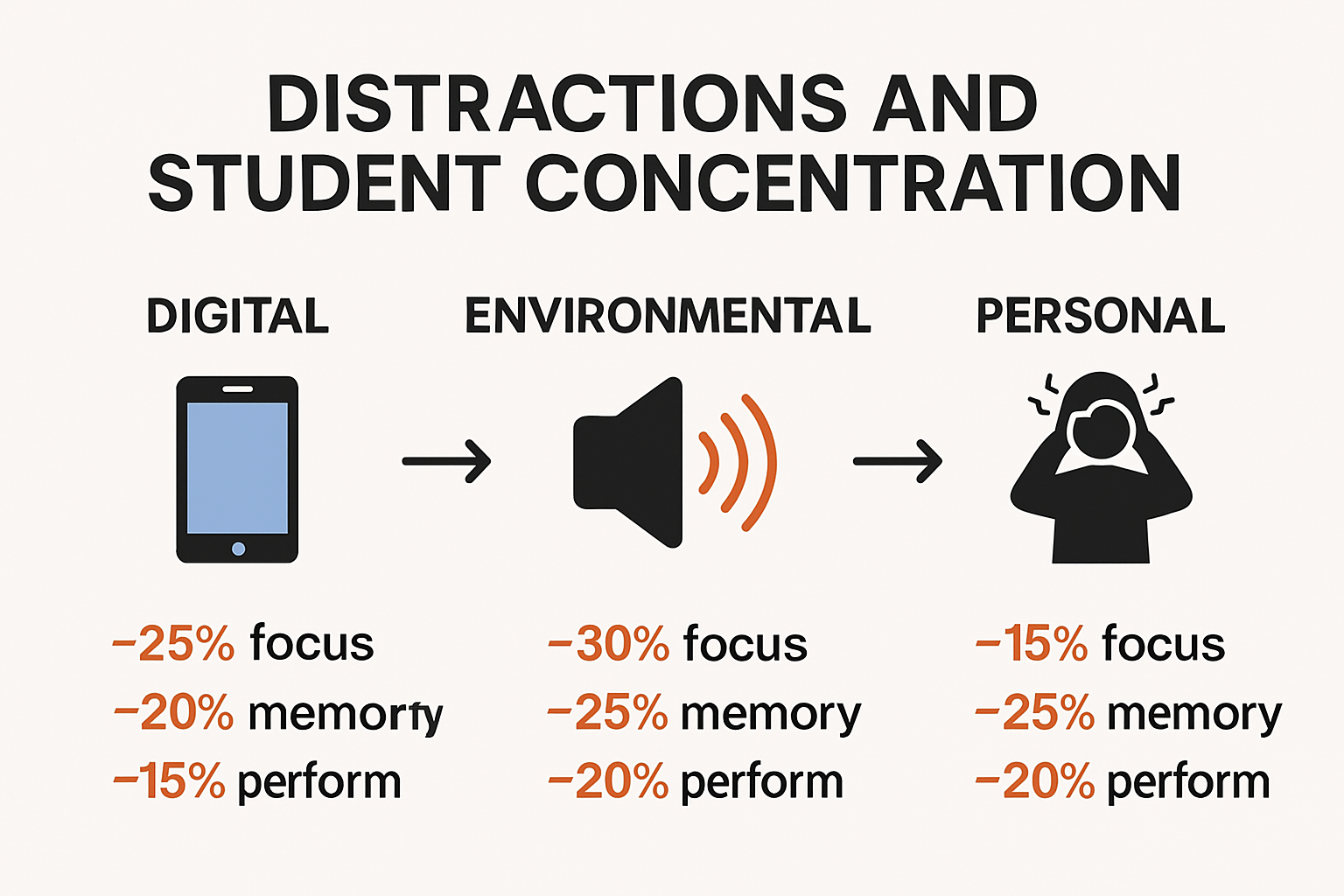
By identifying and addressing these common distractions systematically, students can transform their study experiences from fragmented and frustrating to focused and productive. The key lies in awareness, proactive management, and implementing practical techniques that minimize interruptions and optimize cognitive performance.
Proven Techniques to Improve Focus Quickly
Improving concentration is a skill that can be systematically developed with the right strategies. Discover advanced concentration techniques that can transform your study approach and help you achieve better academic results.
Mindfulness and Meditation Strategies
Research from the National Institutes of Health demonstrates that mindfulness meditation significantly enhances attention and cognitive control. This scientific evidence highlights the powerful impact of mental training techniques on improving concentration. Practicing mindfulness involves developing a present moment awareness that allows students to anchor their attention and resist distracting thoughts.
Simple meditation techniques can be easily integrated into daily study routines. These include focused breathing exercises, body scan meditations, and short mindfulness sessions that help reset mental clarity. By practicing these techniques for just 10-15 minutes daily, students can train their brain to maintain focus more effectively and reduce mental wandering.
Structured Study Techniques
Structured study approaches can dramatically improve concentration and learning efficiency. The Pomodoro Technique stands out as a proven method for maintaining focus. This technique involves breaking study sessions into 25-minute concentrated intervals followed by short 5-minute breaks. This approach prevents mental fatigue and helps maintain high levels of engagement throughout study sessions.
Additionally, creating a dedicated study environment with minimal distractions is crucial. This includes selecting a quiet space, using noise-canceling headphones, turning off digital notifications, and establishing clear boundaries with family or roommates during study times. Physical preparation such as having all necessary study materials ready and maintaining proper hydration and nutrition can also significantly enhance mental focus.
Implementing these proven techniques requires consistent practice and personalization. Every student has unique learning styles and concentration patterns, so experimenting with different strategies is key to finding the most effective approach. The goal is not perfection but progressive improvement in concentration and study skills.
By combining mindfulness practices, structured study techniques, and a supportive learning environment, students can develop robust concentration skills that extend beyond academic pursuits. These techniques not only improve immediate study performance but also contribute to long-term cognitive development and mental resilience.
Healthy Habits That Boost Concentration Long-Term
Sustaining high levels of concentration requires more than temporary strategies. Explore comprehensive concentration enhancement methods that transform your cognitive performance through holistic lifestyle choices.
Nutrition and Physical Wellness
Research from the University of Colorado Boulder highlights the critical connection between diet and mental focus. A balanced nutritional approach directly impacts cognitive function. Complex carbohydrates provide steady energy, proteins support neurotransmitter production, and healthy fats contribute to brain cell maintenance.
Key nutritional strategies include consuming omega-3 rich foods like fish and nuts, maintaining consistent meal times, and staying adequately hydrated. Students should prioritize whole grains, lean proteins, fruits, and vegetables while minimizing processed foods and excessive sugar intake. Proper hydration is equally crucial, as even mild dehydration can significantly reduce cognitive performance and concentration.
Physical Activity and Mental Resilience
Scientific research published in the National Center for Biotechnology Information consistently demonstrates that physical activity profoundly enhances mental health and cognitive function. Regular exercise increases blood flow to the brain, stimulates neurogenesis, and improves overall mental clarity.
Incorporating consistent physical activity doesn’t require intense workout regimens. Moderate exercise like brisk walking, cycling, swimming, or yoga for 30 minutes daily can dramatically improve concentration. These activities reduce stress, enhance neuroplasticity, and create a more resilient mental framework for learning and studying.
Structured Environment and Sleep Hygiene
The University of Massachusetts Dartmouth emphasizes the importance of creating a dedicated, distraction-free study environment. This involves establishing a consistent study schedule, designing an organized workspace, and implementing clear boundaries between study and relaxation areas.
Sleep emerges as a fundamental pillar of concentration. Consistent, quality sleep allows the brain to consolidate memories, process information, and reset cognitive functions. Aim for 7-9 hours of uninterrupted sleep, maintain a regular sleep schedule, and create a relaxing bedtime routine that minimizes screen time and promotes mental relaxation.
Building long-term concentration requires a holistic approach that integrates nutrition, physical activity, structured environments, and quality sleep. By viewing concentration as a lifestyle rather than a temporary skill, students can develop sustainable mental resilience that supports academic success and personal growth.
Below is a comparison table summarizing healthy lifestyle factors that contribute to long-term concentration as detailed in the previous sections:
| Factor | Key Practices | Concentration Benefit |
|---|---|---|
| Nutrition | Balanced meals, omega-3s, steady hydration | Fuels brain function, reduces mental fatigue |
| Physical Activity | Moderate daily exercise (e.g., walking, yoga) | Boosts brain blood flow, improves resilience |
| Structured Study Environment | Organized workspace, dedicated study schedule | Reduces distractions, increases focus |
| Sleep Hygiene | 7-9 hours nightly, consistent bedtime routine | Memory consolidation, restores cognitive function |

Practical Tools and Study Environment Tips
Creating an optimal study environment requires strategic planning and thoughtful tool selection. Explore advanced study optimization techniques that transform your learning space and enhance cognitive performance.
Digital and Physical Study Tools
Research from the National Institutes of Health highlights the significant impact of environmental modifications on cognitive performance. Digital and physical tools play a crucial role in creating a focused study atmosphere. Time management apps, digital planners, and productivity trackers can help students structure their study sessions more effectively.
Consider using tools like Trello for task organization, Forest app for reducing phone distractions, and digital note-taking platforms like Notion or Evernote. Physical tools such as noise-canceling headphones, ergonomic study chairs, adjustable lighting, and dedicated study planners can create a more conducive learning environment. These tools help minimize distractions and provide a structured approach to studying.
Optimizing Study Space and Environment
According to Harvard Health Publishing, creating a distraction-free setting is fundamental to maintaining concentration. This involves carefully designing your study space to minimize potential interruptions. Choose a location with natural light, comfortable temperature, and minimal background noise.
Key environmental considerations include maintaining a clutter-free workspace, using ergonomic furniture, and establishing clear boundaries between study and relaxation areas. Position your study area away from high-traffic zones, use room dividers if necessary, and ensure proper ventilation. Temperature plays a critical role in concentration, so aim for a comfortable range between 68-72 degrees Fahrenheit.
Advanced Concentration Enhancement Techniques
Beyond physical tools, advanced concentration techniques can significantly improve study effectiveness. Implement the Pomodoro Technique using dedicated apps, which breaks study time into focused 25-minute intervals followed by short breaks. Utilize white noise or specific concentration playlists that help mask distracting background sounds.
Consider using blue light filtering glasses to reduce eye strain during extended study sessions, especially when using digital devices. Brain training apps and cognitive enhancement tools can also help improve focus and mental agility. Remember that these tools are supplements to good study habits, not replacements for consistent effort and disciplined learning.
Successful studying is about creating a holistic environment that supports cognitive performance. By carefully selecting tools, optimizing your physical space, and implementing strategic concentration techniques, you can develop a study approach that maximizes learning potential and minimizes distractions.
Frequently Asked Questions
How can I minimize digital distractions while studying?
To minimize digital distractions, turn off non-essential notifications on your devices, use apps that block social media or other distracting sites, and designate specific times for checking messages or notifications.
What are effective mindfulness techniques to improve my concentration?
Effective mindfulness techniques include practicing focused breathing exercises, engaging in body scan meditations, and dedicating 10-15 minutes each day to mindfulness sessions to enhance your awareness and reduce distractions.
How does nutrition influence my ability to concentrate while studying?
Nutrition plays a vital role in concentration. Consuming balanced meals that include complex carbohydrates, healthy fats (like omega-3s), and staying hydrated helps fuel cognitive function and maintain mental energy, enhancing your ability to focus.
What is the Pomodoro Technique and how can it help with studying?
The Pomodoro Technique involves breaking study sessions into 25-minute intervals followed by a 5-minute break. This method helps maintain high levels of engagement and prevents mental fatigue, ultimately improving focus during studying.
Transform Your Study Focus With Timely Insights and Tools
Do you ever feel overwhelmed by constant digital interruptions or find your mind wandering when it’s time to concentrate? The struggle described in How to Increase Concentration in Studies Easily is real. Many students just like you face challenges from smartphone notifications, noisy environments, and mental fatigue every day. If you are determined to build stronger habits, structure your learning, and put mindful study techniques into action, you do not have to search alone.
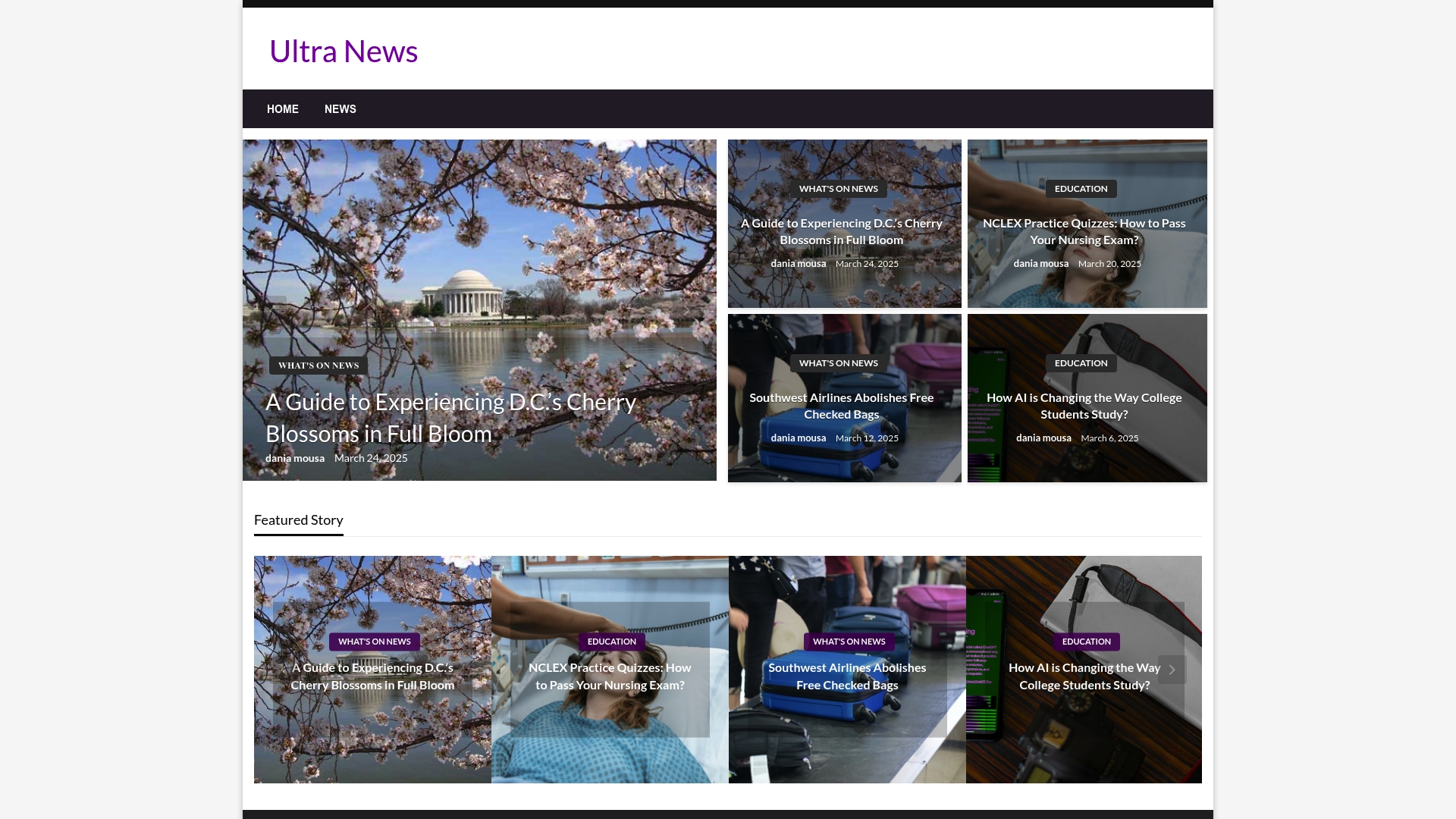
At Ultra News, you get more than just quick advice. Our curated educational content offers easy-to-follow guides and up-to-date strategies for overcoming distractions and boosting your productivity. Take control and turn these science-backed methods into your daily routine. Explore our latest articles now to find out how simple changes can help you achieve faster progress and stay focused for every milestone. Start transforming your concentration habits today at Ultra News.

